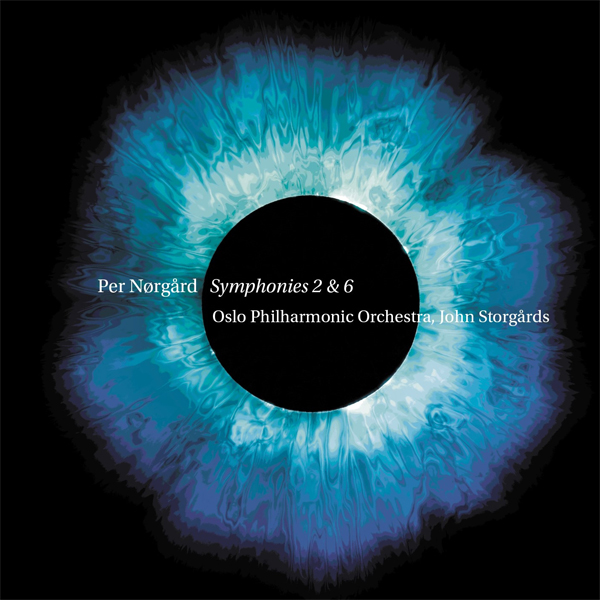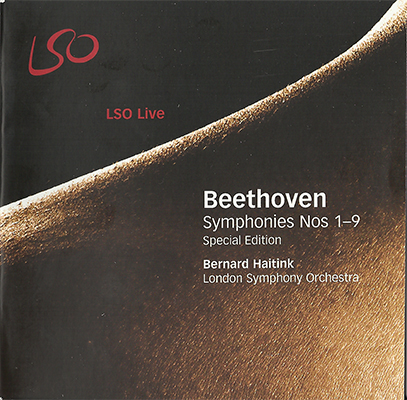
Per Norgard – Symphonies Nos. 2 & 6 – Oslo Philharmonic Orchestra, John Storgards (2016)
FLAC (tracks) 24 bit/96kHz | Time – 54:22 minutes | 834 MB | Genre: Classical
Studio Masters, Official Digital Download – Source: Dacapo-Records.dk | Booklet, Front Cover | © Dacapo Records
Recorded: Oslo Konserthus on 25-28 May 2015 (No. 6); at Oslo Opera House, the orchestra rehearsal room, on 1-5 June 2015 (No. 2)
“I feel each of my symphonies is a whole continent in itself,” the Danish composer Per Nørgård (b. 1932) has said. His music stems from an insatiable urge to explore the phe no mena of the world and the possibilities of music, and his eight symphonies stand as milestones along the course of six decades. This recording with the Oslo Philharmonic conducted by John Storgårds presents Per Nørgård’s Second Symphony, in which the composer unfolds his famous ‘infinity principle’ euphorically and almost psychedelically, and his Sixth Symphony, in which the mature composer proves more exploratory and playful than ever.
‘As if God the Father had thrown down pieces of a mosaic from the floor of heaven and asked me to work out the pattern.’ Not Per Nørgård’s words, of course, but those of his 1950s confidant Jean Sibelius in relation to his own Fifth Symphony. Nørgård’s Fifth was premiered in 1990 in a concert that included Sibelius’s; both are post-crisis, breakthrough scores and both represent a maturing of that concept of symphonic ‘flow’ that is so important to the two composers – the idea that once you get the symphonic river moving, the material will emerge readily enough.
Nørgård lets the listener decide how many movements the Fifth has but the material clearly springs from its opening gesture, as tectonic plates judder into a new position, allowing ideas to pour forth. The ensuing process is tight and controlled, even if the impression is of music that is entirely out of the composer’s control in its impulse and liquidity. Nørgård often uses ostinatos, chaconnes or even single-note anchors to pin the discourse down, but they never curtail its freewheeling spirit. Even when textures are at their most fragmentary, the thread remains; the river keeps flowing. The detail in the writing – articulation bestowed upon single instruments in the tiniest of gestures – is beguiling.
So are these performances. Listening across the orchestra is vital in this music, just as in Sibelius. The Oslo Philharmonic sound settled at the foundations while suggesting spontaneity on the surface. Storgårds offers a touch more nimbleness and translucence than Sakari Oramo, who started this Dacapo cycle with the Vienna Philharmonic. The brass and percussion offer extreme restraint and delicacy. The Oslo string sound is tight but can be wholly embracing too.
Never more so than when it appears to wrap the rest of the ensemble in a fog in the Fourth Symphony’s chilling second movement. In this piece we sense the disintegration of the tonal principles that were prominent in the earlier works towards something that, in Nørgård’s hands, is harmonically even more beautiful – the music getting more complex while getting less complicated. In that, the Fourth looks forward to the Fifth; in its slipping into grooves – the truest of them both unsettled and unsettling – it points towards the Sixth and Seventh. The symphony’s game of opposites is expertly realised by Storgårds, as when the dark second movement ‘Chinese Witch Lake’ glances in the direction of the light first movement ‘Indian Rose Garden’ in a fleeting gesture at the symphony’s close.
On a second disc, we have the chance to hear where those two pieces came from and what they led to. Nørgård’s Second Symphony is that most rooted in the ‘infinity series’, the integer sequence discovered by the composer in the 1960s that controlled a number of his works of the period. As Frank Lehman suggests in a lucid explanation of Nørgård’s exact algorithm on his Unsung Symphonies blog, the result is music that is ‘locally unstable but globally secure’.
For ‘globally secure’ read exceptionally well-formed: a spinning out of the first 4096 notes of the infinity series across a single movement span where bells herald each of the 16 phases and every fourth phase is capped by an exquisite brass ‘screen’. To begin, a delicate unison slides gradually into a semitone, and then the symphony is off on its way – cumulatively beautiful, structurally tangible and deliciously pure. The Oslo Philharmonic’s ability to collectively recede as if into a minimalist canvas, parts emerging thereafter with brightness and intent without distorting the contours, makes this performance. In music that’s deceptively tricky to pace, Storgårds delivers – again.
The Sixth Symphony is less cosmic and more rooted, but the river is still flowing: through rapids in the first movement into dark volcanic rock in the low-brass passacaglia of the Lentissimo and eventually towards the serene waterfalls of the finale. There’s intense joy in the music’s foibles; the slow movement’s wah-wah trumpet almost sees it sidle into that nightclub dance that comes to fruition in the Seventh Symphony. After the spasmodic Fifth, the Sixth feels like a work of new beginnings, despite a title that playfully suggests the opposite; you best hear what annotator Jens Cornelius describes as a ‘humorous game with the infinite’ in the symphony’s pregnant ending.
In this piece, Storgårds paints a more even, subtler picture than Thomas Dausgaard with the DNSO. In the Fifth, Storgårds offers more colour and character than Leif Segsterstam with those same Danish forces while also avoiding his fellow Finn’s histrionics. The rootedness Storgårds finds in the Second and Fourth Symphonies also puts him in pole position after Segerstam’s pioneering recordings; there is a Brendel-like eloquence and inevitability here.
It was about time we had new recordings of these symphonies, works that are absolutely worthy of reappraisal by new generations even in their relative youth. These are magnificent performances, presented with comprehensive booklet-notes by Cornelius and an introduction by Storgårds himself. That I fully expect new recordings to take their place in 30 years or less is a testament to the music’s relevance and strength. -Andrew Mellor, Gramophone
Tracklist:
Per Nørgård (b.1932)
Symphony No. 6 “At the End of the Day” (1999)
1 I. Moderato 15:08
2 II. Lentissimo 9:21
3 III. Allegro energico 6:46
Symphony No. 2 in One Movement (1970; rev. 1971)
4 Lento 23:06
Personnel:
Oslo Philharmonic Orchestra
John Storgårds, conductor
Download:
mqs.link_NrgrdSymphniesNs.26slPhilharmnicrchestraJhnStrgrds2016Dacap2488.2.rar




















![Carl Nielsen - Symphonies Nos. 1-6 - London Symphony Orchestra, Sir Colin Davis (2015) [Blu-Ray Pure Audio Disc + DSF Stereo DSD64/2.82MHz] Carl Nielsen - Symphonies Nos. 1-6 - London Symphony Orchestra, Sir Colin Davis (2015) [Blu-Ray Pure Audio Disc + DSF Stereo DSD64/2.82MHz]](https://getimg.link/images/imgimgimg/uploads/2015/09/Wnf48VE.jpg)
![Maria Callas - Remastered The Complete Studio Recordings 1949-1969 (2014) [Qobuz FLAC 24bit/96kHz] Maria Callas - Remastered The Complete Studio Recordings 1949-1969 (2014) [Qobuz FLAC 24bit/96kHz]](https://getimg.link/images/imgimgimg/uploads/2018/12/Vw7IHlv-1.jpg)
![Per Norgard - Symphonies Nos. 1 & 8 - Wiener Philharmoniker, Sakari Oramo (2014) [FLAC 24bit/48kHz] Per Norgard - Symphonies Nos. 1 & 8 - Wiener Philharmoniker, Sakari Oramo (2014) [FLAC 24bit/48kHz]](https://getimg.link/images/imgimgimg/uploads/2016/05/EMGXYOg.jpg)

![Max Emanuel Cencic - Handel: Ottone, HWV 15 (2017) [Qobuz FLAC 24bit/96kHz] Max Emanuel Cencic - Handel: Ottone, HWV 15 (2017) [Qobuz FLAC 24bit/96kHz]](https://getimg.link/images/imgimgimg/uploads/2017/11/9uXCAkQ.jpg)
![Sir Simon Rattle, Berliner Philharmoniker - Jean Sibelius - Symphonies Nos. 1-7 (2015) [Blu-ray Disc + Pure Audio Blu-ray Disc + FLAC 5.1 24bit/192kHz] Sir Simon Rattle, Berliner Philharmoniker - Jean Sibelius - Symphonies Nos. 1-7 (2015) [Blu-ray Disc + Pure Audio Blu-ray Disc + FLAC 5.1 24bit/192kHz]](https://getimg.link/images/imgimgimg/uploads/2016/02/htbd2jO.jpg)
![Helsinki Philharmonic Orchestra, John Storgards - Sunleif Rasmussen: Symphony No. 2 (2016) [FLAC 24bit/48kHz] Helsinki Philharmonic Orchestra, John Storgards - Sunleif Rasmussen: Symphony No. 2 (2016) [FLAC 24bit/48kHz]](https://getimg.link/images/imgimgimg/uploads/2018/03/PlghQ4r.jpg)
![The Santa Fe Opera & Michael Christie - Mason Bates: The (R)evolution of Steve Jobs (2018) [FLAC 24bit/96kHz] The Santa Fe Opera & Michael Christie - Mason Bates: The (R)evolution of Steve Jobs (2018) [FLAC 24bit/96kHz]](https://getimg.link/images/imgimgimg/uploads/2018/11/gU9ndVd.jpg)
![Pacifica Quartet - Dmitri Shostakovich and his Contemporaries: The Soviet Experience Vol. 1-4 (2011-2013) [24bit FLAC] Pacifica Quartet - Dmitri Shostakovich and his Contemporaries: The Soviet Experience Vol. 1-4 (2011-2013) [24bit FLAC]](https://getimg.link/images/imgimgimg/uploads/2017/07/ntIbtOp.jpg)
![Colin Currie, Truls Mork, Helsinki Philharmonic Orchestra, John Storgards - Rautavaara: Modificata, Towards the Horizon & Incantations (2012/2016) [HighResAudio DSF DSD64/2.82MHz] Colin Currie, Truls Mork, Helsinki Philharmonic Orchestra, John Storgards - Rautavaara: Modificata, Towards the Horizon & Incantations (2012/2016) [HighResAudio DSF DSD64/2.82MHz]](https://getimg.link/images/imgimgimg/uploads/2018/08/tIIVSES.jpg)
![Danish National Symphony Orchestra, Thomas Dausgaard - Langgaard: The Symphonies (2009) [FLAC 24bit/96kHz] Danish National Symphony Orchestra, Thomas Dausgaard - Langgaard: The Symphonies (2009) [FLAC 24bit/96kHz]](https://getimg.link/images/imgimgimg/uploads/2019/01/5XuSegI.jpg)
![The Young Danish String Quartet - Carl Nielsen: String Quartets Vol.2 (2008) [FLAC 24bit/96kHz] The Young Danish String Quartet - Carl Nielsen: String Quartets Vol.2 (2008) [FLAC 24bit/96kHz]](https://getimg.link/images/imgimgimg/uploads/2017/07/O1W673D.jpg)
![Glenn Gould - The Complete Columbia Album Collection (2015 Remastered Edition) [Qobuz FLAC 24bit/44,1kHz] Glenn Gould - The Complete Columbia Album Collection (2015 Remastered Edition) [Qobuz FLAC 24bit/44,1kHz]](https://getimg.link/images/imgimgimg/uploads/2017/07/2bHwfbA.jpg)
![Itzhak Perlman - The Complete Warner Recordings 1972-1980 (2015) [FLAC 24bit/96kHz] Itzhak Perlman - The Complete Warner Recordings 1972-1980 (2015) [FLAC 24bit/96kHz]](https://getimg.link/images/imgimgimg/uploads/2019/12/IpmBmeR.jpg)
![Franco Fagioli - Handel: Serse (2018) [FLAC 24bit/96kHz] Franco Fagioli - Handel: Serse (2018) [FLAC 24bit/96kHz]](https://getimg.link/images/imgimgimg/uploads/2019/04/uc2cQWi.jpg)